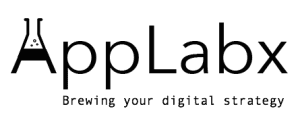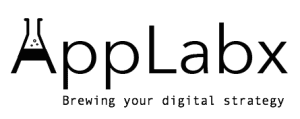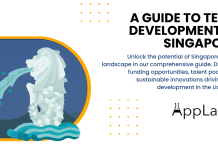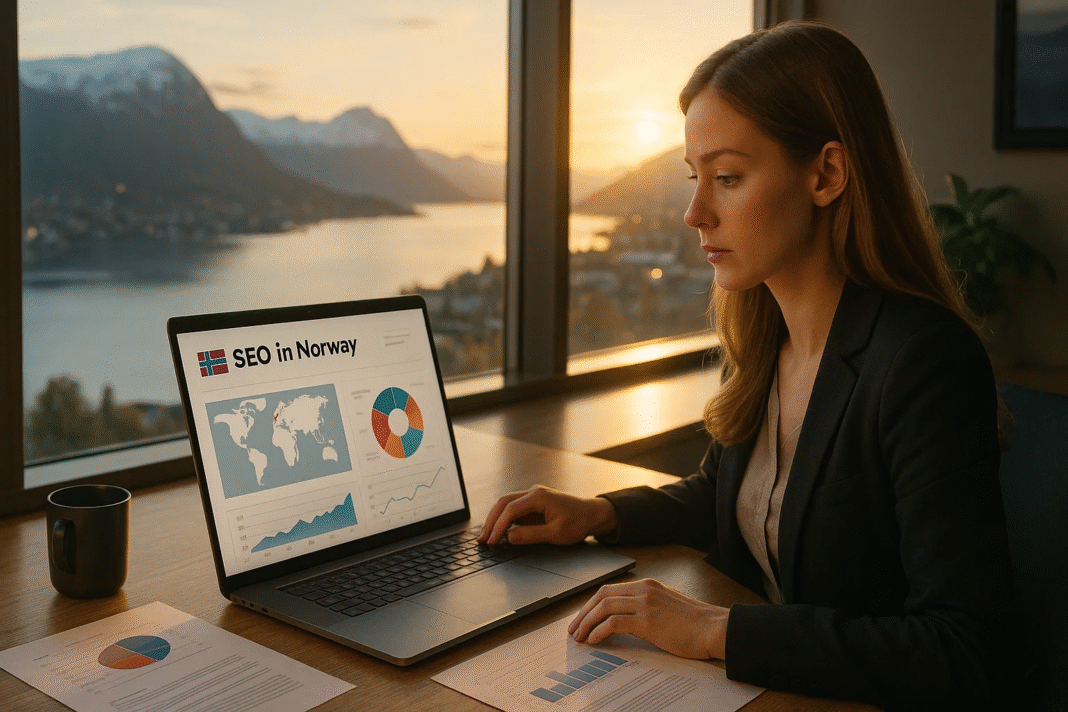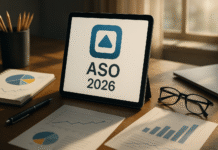Key Takeaways
- AI-driven search and Generative Engine Optimization (GEO) are reshaping how businesses achieve visibility in Norway’s digital market.
- Mobile-first indexing, video content, and conversational search are essential pillars for sustainable SEO success in 2025.
- Localized strategies, technical SEO excellence, and trust-based content remain critical for ranking and long-term digital growth.
Search Engine Optimization (SEO) in Norway has entered a transformative era in 2025, driven by rapid technological innovation, shifting consumer behavior, and the increasing dominance of artificial intelligence in digital marketing. As Norwegian businesses strive to compete in an evolving global economy, SEO has become more than just a technical tool—it is now a cornerstone of digital strategy. With search engines continuing to refine their algorithms and Norwegian consumers demanding faster, more personalized, and mobile-first digital experiences, understanding the current state of SEO in Norway is essential for marketers, brands, and enterprises aiming to thrive in the year ahead.
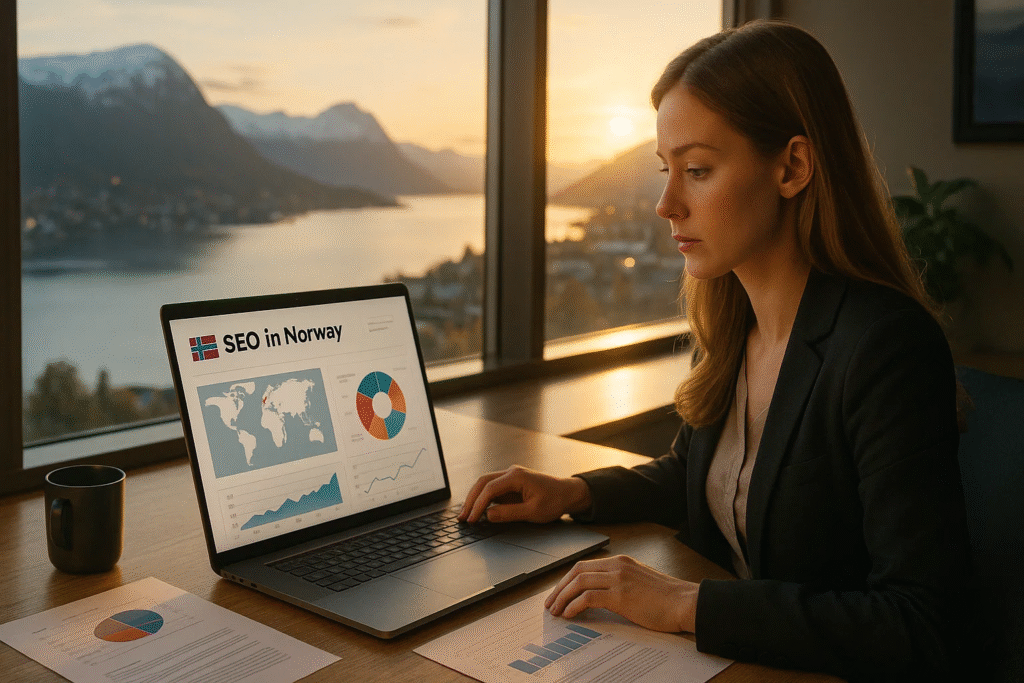
The Norwegian digital landscape in 2025 reflects a society deeply connected to technology. High internet penetration, advanced mobile usage, and strong e-commerce growth have made search visibility more competitive than ever. According to digital insights reports, over 98% of Norwegians are active internet users, and search plays a pivotal role in shaping consumer decisions across industries such as retail, finance, healthcare, travel, and technology. This heavy reliance on search engines has placed SEO strategies at the forefront of marketing campaigns, especially as competition intensifies both locally and internationally.
One of the defining shifts in SEO in Norway in 2025 is the rise of AI-driven search. Tools like Google’s AI Overviews and generative search experiences have reshaped how users interact with content, demanding that businesses rethink traditional keyword optimization. Instead of focusing solely on rankings, brands now need to optimize for context, relevance, and user intent, ensuring that their content is discoverable across AI-generated summaries, voice assistants, and zero-click searches. In Norway, where consumers are highly tech-savvy and value efficiency, these innovations are reshaping the path to digital engagement.
Another critical factor shaping SEO in Norway is linguistic diversity. With both Bokmål and Nynorsk serving as written standards of the Norwegian language, content strategies must balance inclusivity while ensuring clarity and search visibility. Moreover, English-language searches remain strong, particularly in technology and e-commerce, creating a multilingual challenge for SEO professionals. Businesses must now consider international SEO strategies alongside local optimizations to fully capture market potential.
Mobile-first optimization has also become non-negotiable in 2025. Norway ranks among the top countries in Europe for smartphone penetration, and mobile search is now the primary driver of traffic across industries. Websites that are not mobile-friendly risk losing visibility in search rankings and credibility among Norwegian users, who expect seamless browsing experiences. This trend extends to voice search as well, with smart speakers and voice assistants increasingly integrated into daily life, making conversational queries a growing priority for SEO strategies.
Additionally, local SEO has gained new momentum. Norwegian consumers are increasingly looking for products and services “near me,” and businesses that fail to optimize for local search risk losing significant opportunities. Whether it is a café in Oslo, a boutique in Bergen, or a tech consultancy in Trondheim, local visibility is now critical for attracting relevant audiences and building trust in competitive markets.
The Norwegian SEO industry in 2025 is also shaped by sustainability, data privacy, and consumer trust. As the Norwegian Consumer Authority and European Union enforce stricter transparency and data protection regulations, SEO professionals must align their strategies with compliance requirements. Ethical SEO practices—such as transparent content, responsible link-building, and privacy-first analytics—are now central to long-term success.
This report provides a comprehensive strategic overview of SEO in Norway in 2025, analyzing key trends, challenges, and opportunities. It examines how businesses can adapt to AI-driven search, leverage multilingual content, dominate mobile-first and local search, and align with the growing expectations of Norwegian consumers. By exploring these dynamics in depth, the report offers actionable insights that marketers, agencies, and brands can use to future-proof their SEO strategies in one of Europe’s most digitally advanced markets.
But, before we venture further, we like to share who we are and what we do.
About AppLabx
From developing a solid marketing plan to creating compelling content, optimizing for search engines, leveraging social media, and utilizing paid advertising, AppLabx offers a comprehensive suite of digital marketing services designed to drive growth and profitability for your business.
At AppLabx, we understand that no two businesses are alike. That’s why we take a personalized approach to every project, working closely with our clients to understand their unique needs and goals, and developing customized strategies to help them achieve success.
If you need a digital consultation, then send in an inquiry here.
Or, send an email to [email protected] to get started.
The State of SEO in Norway in 2025: A Strategic Report
- The Norwegian Digital Market in 2025: A Data-Driven Overview
- The Search Engine Landscape: Google’s Unwavering Dominance
- Understanding the Norwegian Digital Consumer
- The Economics of SEO in Norway: Costs and ROI
- Strategic Pillars for SEO Success in Norway
- The Future of SEO: Emerging Trends for 2025 and Beyond
- Recommendations: An Actionable Roadmap for 2025
1. The Norwegian Digital Market in 2025: A Data-Driven Overview
A. Digital Infrastructure and Penetration
Understanding the state of SEO in Norway in 2025 requires an in-depth look into the country’s digital ecosystem. Norway remains one of the most digitally advanced nations globally, where universal connectivity, robust infrastructure, and widespread mobile adoption create a market highly dependent on seamless online experiences.
Digital Penetration and Connectivity
- Universal Internet Adoption
- Internet penetration in Norway stands at 99%, representing 5.55 million active internet users in January 2025.
- Usage is consistent across genders, with both men and women reaching 99% adoption, reflecting no digital divide.
- Mobile Connectivity
- The country records 5.99 million mobile connections, equivalent to 107% of the population, highlighting a culture where individuals often maintain multiple devices or SIM cards.
- Broadband and Speed Infrastructure
- Fixed Internet median download speed: 146.52 Mbps
- Mobile Internet median download speed: 145.74 Mbps
- Such high-speed access ensures that users demand instant page loading, seamless streaming, and frictionless navigation, pushing businesses to prioritise performance-based SEO strategies.
Strategic SEO Implications
- Technical SEO Becomes Critical
- With near-universal high-speed access, users experience minimal barriers from internet providers.
- Any lag, slow load time, or poor Core Web Vitals results directly from website performance—not connectivity.
- Businesses face a high-stakes environment, where underperforming sites risk rapid abandonment by impatient users.
- Mobile-First Imperatives
- Norway’s mobile saturation signals the necessity of mobile-first SEO design.
- Websites must be responsive, fast, and tailored to on-the-go browsing behaviour.
- Consumer as a Constant Digital Touchpoint
- With nearly the entire population online, every Norwegian is a reachable digital prospect.
- SEO is not a peripheral tactic but the primary channel for visibility, trust, and market competitiveness.
Norway’s 2025 Digital Landscape at a Glance
| Metric | 2025 Figure | SEO Implication |
|---|---|---|
| Internet Penetration | 99% (5.55M users) | Digital-first strategy is mandatory |
| Gender Distribution | 99% men & women online | No demographic gaps in targeting |
| Mobile Connections | 5.99M (107% of population) | Mobile-first indexing and UX vital |
| Median Fixed Speed | 146.52 Mbps | Technical SEO: fast websites are non-negotiable |
| Median Mobile Speed | 145.74 Mbps | Speed optimization directly affects rankings |
Key Insights for SEO Professionals
- Norway’s highly digitised society ensures that SEO efforts have maximum reach potential.
- Speed, technical efficiency, and user experience outweigh traditional SEO shortcuts.
- The mobile-first environment requires businesses to rethink desktop-centric strategies.
- The competitive edge lies in superior optimization, as users hold high expectations for digital interactions.
B. The E-commerce and Digital Advertising Landscape
Norway’s digital economy in 2025 is not merely defined by its infrastructure but also by the expansion of its e-commerce and digital advertising sectors, both of which are undergoing rapid transformation. With rising consumer sophistication, shifting values toward sustainability, and an increasingly competitive online retail environment, the Norwegian e-commerce market presents unique opportunities and challenges for SEO strategists.
Market Valuation and Growth Trajectory
- Current Market Size
- The Norwegian e-commerce sector is valued at USD 9.63 billion in 2025.
- Projected Growth
- Expected to grow to USD 14.21 billion by 2030.
- Compound Annual Growth Rate (CAGR): 7.91%, reflecting consistent and sustainable expansion.
- Driving Forces of Growth
- High internet and mobile penetration.
- Tech-savvy consumers demanding efficient, user-friendly platforms.
- Increased digital advertising investments targeting precision audiences.
Market Segmentation Dynamics
- B2C (Business-to-Consumer)
- Holds a dominant 78% market share.
- Driven by established retailers, advanced logistics, and widespread adoption of secure online payment systems.
- Brands must focus on conversion rate optimization, mobile SEO, and localized targeting to capture Norway’s digitally mature consumers.
- C2C (Consumer-to-Consumer)
- Experiencing rapid acceleration with a CAGR of 12.6% through 2030, surpassing overall market growth.
- Propelled by:
- Consumer demand for sustainability and second-hand commerce.
- Price sensitivity among younger demographics.
- Popularity of peer-to-peer platforms such as Finn.no.
- Represents a high-potential SEO frontier, often overlooked by traditional e-commerce businesses.
- Local Preference
- Approximately 87% of domestic online sales are directed toward Norwegian-based stores.
- Emphasizes the importance of localized SEO strategies, Norwegian-language content, and trust-building signals (secure domains, transparent pricing, customer service accessibility).
Strategic SEO Implications for Businesses
- Beyond Traditional B2C SEO
- Solely optimizing corporate e-commerce sites is no longer sufficient.
- Businesses must expand SEO efforts to C2C marketplaces, ensuring visibility on second-hand and classified platforms.
- Sustainability as a Ranking Signal
- Eco-consciousness influences not just consumer buying habits but also search trends and keyword demand.
- Incorporating sustainability-focused SEO strategies (e.g., long-tail keywords around reuse, recycling, and ethical shopping) can capture high-intent traffic.
- Advertising and SEO Convergence
- Digital advertising and SEO are increasingly interconnected.
- Paid campaigns can inform keyword research, while organic SEO ensures long-term discoverability.
Norway’s 2025 E-Commerce Breakdown
| Segment | Market Share (2025) | CAGR (2025–2030) | Key SEO Opportunities |
|---|---|---|---|
| B2C | 78% | 7.91% | Conversion optimization, local SEO, advanced UX |
| C2C | 22% | 12.6% | Visibility on peer-to-peer platforms, sustainability keywords |
| Local Online Sales | 87% | Steady | Norwegian-language SEO, brand trust signals |
Key Takeaways for SEO Professionals
- Norway’s e-commerce market is dual-driven by B2C dominance and C2C acceleration.
- SEO strategies must account for consumer sustainability values, localized preferences, and cross-platform visibility.
- The synergy of technical SEO, content localization, and marketplace optimization will determine long-term success.
- Businesses that embrace multi-dimensional SEO strategies—spanning both B2C and C2C environments—are best positioned to thrive in Norway’s evolving digital economy.
2. The Search Engine Landscape: Google’s Unwavering Dominance
A. Search Engine Market Share Analysis
Norway’s search engine ecosystem in 2025 is defined by Google’s enduring dominance, shaping every aspect of digital visibility and organic search strategy. For businesses and marketers, the implications are profound: mastering Google’s algorithmic ecosystem is not an option, but a strategic necessity.
Market Share Analysis of Search Engines
- Google’s Near-Monopoly
- As of July 2025, Google commands 89.1% of all search traffic in Norway.
- While slightly lower than its global market share of 89.57%, this figure highlights its entrenched dominance across both desktop and mobile environments.
- Minor Competitors
- Yandex: 3.79%
- Bing: 3.56%
- Collectively, alternative engines account for less than 8% of the market, underscoring their limited strategic importance for SEO in Norway.
- Search Host Patterns
- Global Domain (google.com): 81.56% of search host traffic.
- Local Domain (google.no): 3.45% of search host traffic.
- Desktop Usage:
- google.com leads with 72.83%.
- google.no accounts for 3.54%.
Strategic Implications for SEO in Norway
- Google as the Central Pillar
- SEO campaigns must be engineered exclusively with Google in mind.
- Allocating resources to Yandex or Bing would yield negligible ROI due to their minimal presence in the market.
- Global vs. Local Domain Strategy
- The heavy reliance on google.com highlights the importance of building visibility on the global search ecosystem.
- However, the local google.no domain, though smaller in share, still captures high-intent Norwegian traffic, especially for local queries.
- A dual-focused SEO approach—balancing global keyword targeting in English with localized Norwegian queries—ensures maximum reach and conversion potential.
- Content and Keyword Strategy
- Businesses must optimise for both broad, globally competitive keywords and hyper-localised Norwegian search terms.
- Incorporating multilingual SEO (English + Norwegian) strengthens brand authority across diverse audience segments.
- Algorithm Adaptability
- Given Google’s ever-evolving algorithm, continuous monitoring of Core Web Vitals, structured data, E-E-A-T (Experience, Expertise, Authoritativeness, Trustworthiness), and AI-driven ranking signals is essential.
Norway’s Search Engine Market Snapshot (July 2025)
| Search Engine | Market Share | Strategic Importance |
|---|---|---|
| 89.1% | Primary SEO focus – dominant platform | |
| Yandex | 3.79% | Minimal impact – not recommended for resource allocation |
| Bing | 3.56% | Limited relevance – niche optimisation only |
| Others | <4% | Negligible influence on SEO strategies |
Key Insights for SEO Professionals
- Norway’s search market is effectively a single-platform environment.
- Success in SEO equates to success in Google search rankings, both on google.com and google.no.
- A hybrid SEO strategy—blending global presence with localised optimisation—is the most effective pathway to dominance.
- Businesses that fail to align with Google’s search ecosystem risk losing visibility in a market where search is the primary gateway to digital commerce and information.
B. The Mobile-First and Zero-Click Ecosystem
Norway’s search landscape in 2025 is shaped by two pivotal forces that redefine how businesses must approach SEO: the dominance of mobile-first interactions and the escalation of zero-click search results. Together, these trends have reshaped both the technical and content-driven aspects of digital visibility, compelling brands to adopt a more adaptive and strategic framework.
The Mobile-First Imperative
- Mobile as the Primary Search Medium
- In 2025, 83.58% of Google’s traffic in Norway originates from mobile devices, highlighting a near-complete transition from desktop-first to mobile-first browsing.
- This dominance is directly aligned with Google’s exclusive mobile-first indexing model, where mobile versions of websites are the benchmark for rankings.
- Strategic SEO Implications
- Responsive Design as Mandatory: Websites must adapt flawlessly to multiple screen sizes, ensuring fluid navigation and fast load times.
- Core Web Vitals Prioritisation: Mobile page speed, visual stability, and interactivity metrics weigh heavily on ranking performance.
- Local and On-the-Go Searches: Mobile-driven queries often carry strong local intent, making local SEO, map optimization, and structured data integration essential.
- Competitive Advantage
- Businesses that fail to optimise for mobile risk disqualification from prime search rankings, regardless of content quality.
- Conversely, those excelling in mobile UX, voice search readiness, and responsive layouts secure a measurable competitive edge.
The Rise of Zero-Click Search Results
- Defining the Trend
- Zero-click searches occur when users obtain their answers directly from SERP features—such as featured snippets, knowledge panels, People Also Ask sections, and instant answers—without visiting external websites.
- In 2025, zero-click results have become a defining characteristic of Norwegian search behaviour, reshaping user journeys.
- Strategic SEO Implications
- Content Structuring for SERPs: Businesses must adapt by producing concise, scannable, and algorithm-friendly content that answers questions directly.
- Featured Snippets Optimisation: Formatting content with clear headings, lists, tables, and FAQ schemas improves the likelihood of capturing snippets.
- Authority and Trust Signals: Google increasingly rewards content backed by expertise, structured data, and strong internal linking strategies.
- Shift in Metrics: Traditional KPIs like CTR must evolve, as visibility, brand recall, and impression share gain importance in a zero-click world.
Norway’s Mobile and Zero-Click Search Landscape (2025)
| Trend | 2025 Status | SEO Implication |
|---|---|---|
| Mobile Search | 83.58% of Google traffic | Responsive design, mobile speed, local SEO essential |
| Mobile-First Indexing | Exclusive model | Websites ranked based on mobile versions |
| Zero-Click Searches | Increasing dominance | Content optimisation for snippets, FAQs, and panels |
| SERP Features | Snippets, panels, PAAs, direct answers | Structured content, schema markup, authority signals |
Key Insights for SEO Professionals
- Mobile-first optimisation is non-negotiable—technical excellence in mobile UX directly dictates visibility.
- Zero-click SERPs redefine success metrics—brand exposure and authority now rival traditional traffic goals.
- Content must evolve to answer questions instantly, structured for both users and algorithms.
- Businesses that integrate mobile SEO with zero-click strategies will be best positioned to thrive in Norway’s highly competitive digital market.
3. Understanding the Norwegian Digital Consumer
An effective SEO strategy in Norway extends beyond the realm of algorithms and technical performance. Success in this market demands a nuanced appreciation of consumer psychology, cultural values, and behavioural patterns. The Norwegian digital consumer is pragmatic, cautious with data privacy, deeply committed to sustainability, and highly analytical in purchase decision-making. These defining traits shape not only how they search but also how they engage with brands in the digital ecosystem.
Privacy, Trust, and Regulatory Transparency
- Privacy Concerns
- 93% of online shoppers in Norway express concern over targeted advertising.
- 71% worry specifically about personal data being collected without consent.
- These figures underline a general scepticism toward paid media channels and intrusive marketing.
- Regulatory Framework
- Norway enforces GDPR with rigour, ensuring that consumer privacy rights are well protected.
- The 2025 Transparency Act obliges companies to publicly disclose human rights due diligence, further embedding accountability into digital commerce.
- SEO Implications
- Consumers view organic search results as more credible than paid advertisements.
- Businesses must prioritise authority-building through transparent, high-quality content rather than over-reliance on personalised ad targeting.
- Reputation management becomes critical: with 66% of consumers wary of fake reviews, brands must cultivate authentic testimonials, particularly on platforms such as Google Business Profile.
The Role of Sustainability in Consumer Search Behaviour
- Sustainability as a Cultural Standard
- 8 in 10 Norwegian consumers consider sustainability an important factor when shopping online.
- Norway is a global leader in green technology and electric mobility, with 90% of new passenger cars sold in 2025 being fully electric.
- Pragmatism vs. Values
- Despite sustainability being central, consumers balance ecological values with practical considerations such as:
- Taste (particularly in food and beverages).
- Product quality.
- Price sensitivity.
- This indicates that “eco-friendly” keywords alone are insufficient to drive conversions.
- Despite sustainability being central, consumers balance ecological values with practical considerations such as:
- SEO Strategy Implications
- Content must demonstrate alignment between sustainability and pragmatism.
- High-impact approaches include:
- Cost-benefit analyses that showcase both environmental impact and financial practicality.
- Transparent product data supporting claims of sustainability.
- Case studies and testimonials reinforcing credibility and trust.
Content Consumption and Evolving Search Intent
- Pragmatic, Data-Driven Decision-Making
- Norwegian consumers are analytical buyers, frequently comparing offers and examining data before committing to purchases.
- This behaviour necessitates data-rich content, backed by statistics, industry insights, and expert case studies.
- Rise of Video as a Search Channel
- Platforms such as YouTube boast 4.34 million users in Norway as of 2025.
- Short-form video continues to dominate engagement, making video SEO a vital part of digital strategies.
- Brands must optimise video titles, metadata, and transcripts to maximise discoverability.
- Voice and Conversational Search
- 50% of all searches in Norway are voice-based.
- 82% of voice queries rely on long-tail keywords, often phrased conversationally (e.g., “how do I fix a leaky faucet” vs. “faucet repair”).
- SEO strategies must focus on:
- Long-tail keyword integration.
- Conversational phrasing in content.
- FAQ schemas to capture natural-language queries.
Norwegian Digital Consumer Snapshot (2025)
| Consumer Trait | Data Point | SEO Implication |
|---|---|---|
| Privacy Concern | 93% worry about targeted ads | Build trust through organic SEO, avoid over-reliance on paid targeting |
| Data Collection Worry | 71% concerned about consent | Transparent data policies and trust signals essential |
| Fake Reviews Concern | 66% sceptical of reviews | Prioritise authentic user reviews and strong reputation management |
| Sustainability Influence | 80% consider sustainability in shopping | Use eco-focused + pragmatic messaging in SEO content |
| EV Adoption | 90% of new cars sold fully electric | Align SEO with green-tech narratives |
| Video Usage | 4.34M YouTube users | Invest in video SEO and metadata optimisation |
| Voice Search Adoption | 50% of searches via voice | Optimise for conversational queries and long-tail keywords |
Key Insights for SEO Professionals
- Privacy-first marketing is essential—transparency and trust signals outperform aggressive ad targeting.
- Sustainability-focused SEO must connect ecological values with practical benefits like cost and quality.
- Data-driven content—statistics, comparisons, and case studies—resonates strongly with pragmatic Norwegian consumers.
- Voice and video optimisation are critical growth areas, requiring brands to expand content beyond text.
- SEO in Norway is not simply about rankings; it is about building long-term trust, authority, and cultural alignment with one of the world’s most digitally mature audiences.
4. The Economics of SEO in Norway: Costs and ROI
The state of SEO in Norway cannot be fully understood without examining its financial underpinnings. For Norwegian enterprises, SEO has evolved from a marketing expenditure into a strategic capital investment, delivering sustainable long-term returns. Decision-makers are increasingly aligning SEO budgets with revenue growth objectives, particularly as traditional paid channels face rising costs and declining trust.
Pricing Models and Industry Compensation
- SEO Specialist Salaries
- Average annual salary: NOK 681,660 (approx. NOK 328/hour)
- Oslo average: NOK 656,365 annually (approx. NOK 316/hour)
- Salaries in Oslo reflect a 6% premium compared to the national average.
- Freelance Rates
- Freelancers (global average): $49–$70/hour
- Norwegian freelancers: aligned with global but often slightly higher due to cost of living.
- Agency Pricing
- Oslo agencies:
- Entry range: $25–$49/hour
- Mid-tier: $50–$99/hour
- Premium agencies: above $100/hour
- Global agency average: $70/hour
- Oslo agencies:
- Project & Retainer Costs
- Global monthly retainers: $1,500–$5,000
- Enterprise retainers: $10,000+ per month
- One-time audits: $500–$5,000
- Full-scope projects: up to $37,158.66
Comparative Table: SEO Service Costs (Norway vs. Global 2025)
| Pricing Model | Norway (Oslo) | Global Average |
|---|---|---|
| Freelancer Hourly Rate | $49–$70/hr | $49–$63/hr |
| Agency Hourly Rate | $25–$99/hr+ | $50–$70/hr |
| Monthly Retainer | $1,500–$5,000+ | $1,500–$5,000+ |
| Full-Scope Project | $5,000–$37,000+ | $5,000–$37,000+ |
| SEO Specialist Salary (Annual) | NOK 656,365–681,660 | Comparable (adjusted) |
Insight:
- The fragmented Norwegian market presents both opportunities and risks. Some agencies offer unusually low rates, which can be a red flag for low-quality or outsourced services.
- Executives must prioritize track record, transparency, and data-driven strategies over cost minimization.
Quantifying Return on Investment (ROI)
- Business Perception of ROI
- 49% of global business owners state SEO delivers the highest ROI among all marketing channels.
- Conversion Rates
- Organic search: 14% average conversion rate
- Paid search (PPC): ~10% conversion rate
- SEO therefore delivers higher efficiency per conversion.
- Industry-Specific ROI Benchmarks
- E-commerce: 317% ROI, with break-even in 16 months
- B2B SaaS: 702% ROI
- Legal services: 526% ROI
- Technical SEO: break-even possible in as little as 6 months
ROI Matrix: SEO vs. Paid Advertising (2025 Global Averages)
| Channel / Industry | Average ROI (%) | Break-even Period |
|---|---|---|
| E-commerce SEO | 317% | 16 months |
| B2B SaaS SEO | 702% | 18–24 months |
| Legal Services SEO | 526% | 12–18 months |
| Technical SEO (audit & fixes) | ~200%+ | 6 months |
| Paid Search (PPC) | 150–200% | Immediate, but short-lived |
Strategic Implications for Norwegian Businesses
- SEO as Capital Investment
- Unlike PPC, where traffic ceases once the budget stops, SEO builds durable equity in organic visibility.
- A well-optimized website functions as a sustained traffic generator, reducing long-term customer acquisition costs.
- C-Suite Alignment
- Executives increasingly view SEO budgets as a line item of strategic investment, not marketing spend.
- High ROI figures coupled with low break-even thresholds make SEO one of the most defensible long-term strategies in the Norwegian digital economy.
- Risk of Underinvestment
- Businesses opting for low-cost providers risk scam services, shallow audits, and negligible impact.
- In Norway’s competitive and regulated digital ecosystem, quality and credibility outweigh price in determining ROI outcomes.
5. Strategic Pillars for SEO Success in Norway
An advanced SEO framework in Norway demands a holistic and multi-layered approach that adapts to the nation’s evolving digital ecosystem. By understanding market-specific dynamics, businesses can build a sustainable competitive edge. The following pillars represent the essential foundations for SEO success in Norway in 2025.
Local SEO as a Foundational Growth Driver
- Local-first imperative
- Nearly all Norwegian internet users (99%) have searched for information about local businesses.
- Over 80% of searches demonstrate clear local intent, making local visibility indispensable.
- 68% of users select results from the Google Local 3-Pack, amplifying the importance of Google Maps optimisation.
- Google Business Profile (GBP) as the central asset
- Businesses with optimised GBPs achieve 2.7x higher customer engagement.
- Profiles enriched with visual and social signals rank significantly better.
- Key ranking factors in local SEO performance: FactorContribution to Listing PerformanceMeasurable ImpactPhotos24%+42% direction requests, +35% website clicksReviews21%Trust-building and engagement multiplierPosition in SERPs21%Direct impact on visibility and CTR
- Best practices for optimisation
- Add 15+ high-quality photos per location.
- Respond to at least 30% of customer reviews to foster trust.
- Prioritise ongoing updates and reputation management.
- Expectation setting
- Local SEO produces faster wins for low-competition queries.
- Comprehensive results require long-term consistency rather than short bursts of activity.
Content and Language Strategy: Navigating Bokmål, Nynorsk, and English
- The Norwegian keyword paradox
- English keywords often yield higher search volumes.
- Norwegian (especially Bokmål) keywords deliver higher conversion rates due to cultural trust and relevance.
- Dual-language funnel strategy
- English-language content: Capture top-of-funnel awareness and global reach.
- Localized Bokmål content: Target bottom-of-funnel, high-intent searches for conversions.
- This dual funnel reduces translation overheads while maximising ROI.
- Language dynamics in Norway Language VariantUsage Among PopulationMarket SignificanceBokmål~90%Dominant in business, media, and urban hubsNynorsk~10%Regionally important but limited national influence
- Domain and branding signals
- A .no domain adds minimal algorithmic advantage but provides substantial brand trust and localisation credibility.
- Content length and search intent alignment
- Top-ranking pages average ~2,200 words.
- Content above 2,000 words can negatively correlate with traffic if misaligned with intent.
- The optimal strategy:
- Comprehensive long-form content for informational queries.
- Concise, action-driven pieces for transactional queries.
Backlinks and Authority Development
- Opportunity in Norway’s backlink landscape
- Only 6% of webpages in Norway currently possess backlinks.
- This creates a significant advantage for businesses prioritising authority building.
- Best practices
- Secure backlinks from authoritative Norwegian websites (local relevance increases impact).
- Prioritise editorial mentions, partnerships, and PR coverage in Norwegian digital media.
- Develop thought-leadership content targeting industry-specific portals and local publishers.
- Authority leverage matrix: Link Source TypeImpact on RankingsLocal Relevance ValueScalabilityNational news sitesHighVery HighMediumRegional/local blogsMediumHighHighInternational directoriesMediumLowHighAcademic/industry sourcesVery HighMediumLow
E-Commerce and Marketplace SEO Integration
- Expanding beyond owned websites
- Norway’s e-commerce market is valued at USD 9.63 billion in 2025.
- Growth is driven not only by branded stores but also comparison sites, classifieds, and marketplaces.
- Key platforms shaping Norway’s digital commerce PlatformRole in MarketSEO/Technical AdvantageTemuLeading C2C marketplaceExpands consumer reach beyond brand-owned sitesPrisjaktPrice comparison leaderIntegration with Google Merchant feedsFinn.noClassifieds giantAPI enables direct product listing on brand sites
- Optimisation imperatives
- Ensure product feeds include GTINs for accelerated indexing.
- Maintain structured data compliance for products across multiple platforms.
- Integrate multi-channel SEO strategies to capture traffic from both search engines and high-traffic Norwegian marketplaces.
6. The Future of SEO: Emerging Trends for 2025 and Beyond
The state of SEO in Norway is undergoing profound transformation, shaped by global technological innovations, consumer behaviour shifts, and local market dynamics. Businesses that adopt forward-looking strategies will secure stronger visibility, higher conversions, and long-term competitiveness in this evolving ecosystem.
AI-Driven Search and the Era of Generative Engine Optimization (GEO)
- Artificial Intelligence is no longer peripheral; it is redefining search itself.
- Generative Engine Optimization (GEO) represents a new paradigm:
- Focuses on ranking within AI-powered search environments instead of only traditional SERPs.
- Requires conversational, context-rich, and semantically relevant content that aligns with Natural Language Processing (NLP).
- Key strategic imperatives:
- Craft long-form, structured answers designed to serve AI-driven summaries.
- Prioritize entity-based SEO over simple keyword targeting.
- Integrate FAQs, schema markup, and semantic clusters to maximize AI discoverability.
Matrix: Traditional SEO vs. GEO in Norway (2025)
| Aspect | Traditional SEO | Generative Engine Optimization (GEO) |
|---|---|---|
| Primary Target | Google SERPs | AI-driven search & summaries |
| Content Style | Keyword-rich, structured | Conversational, contextual, intent-based |
| Ranking Signals | Backlinks, CTR, on-page signals | Entity recognition, semantic depth, AI-trainable content |
| User Engagement | Page clicks & dwell time | Direct AI-generated answers & brand mentions |
The Growing Dominance of Video and Conversational Search
- Video consumption in Norway has surged, making it a core pillar of modern SEO.
- Google’s advanced video indexing rewards even smartphone-quality, authentic content.
- Videos that provide clear answers to customer questions and are enriched with keyword-optimized titles, descriptions, and captions gain higher traction.
- Voice and conversational search adoption is also accelerating:
- Over 50% of Norwegian searches are voice-based.
- Queries tend to be long-tail, natural, and dialogue-driven.
- Strategic requirements:
- Produce “snackable” video explainers aligned with user FAQs.
- Implement conversational content frameworks that directly answer voice search queries.
- Optimize structured data with video schema and rich snippets for maximum SERP exposure.
Technical SEO: The Invisible Bedrock of Performance
- Despite heavy focus on content, technical SEO remains the critical enabler of discoverability and user experience.
- Mobile-first indexing is mandatory, yet execution gaps persist.
- Key findings from 2025 audits of 25,000+ e-commerce sites:
- Average Lighthouse performance score: 67/100.
- 53% lacked canonical tags, risking duplicate content penalties.
- 62.4% contained at least one broken link, severely impacting crawlability.
- Page speed remains pivotal: a delay of 1–3 seconds increases bounce rates by 32%.
- Competitive advantage lies in integrating technical and creative SEO disciplines:
- Content strategists must understand schema, structured data, and image optimization.
- Technical SEO experts must align site structure with user intent, topic clusters, and content depth.
- Companies adopting holistic audits will outperform siloed approaches.
Chart: Common Technical SEO Errors in Norwegian E-Commerce (2025)
% of Websites with Errors
Broken Links ████████████████████ 62.4%
Missing Canonicals ██████████████ 53.0%
Low Speed Scores ████████████ 47.5%
Unoptimized Images █████████ 35.2%
Schema Issues ██████ 22.1%
Strategic Takeaway
- AI-powered search and GEO will reshape keyword strategies into semantic, entity-based ecosystems.
- Video and conversational optimization are no longer optional but foundational.
- Technical SEO discipline—ranging from performance to structured data—is the unseen backbone enabling all other strategies.
- Businesses in Norway that blend human-centric storytelling with machine-driven technical precision will dominate SEO rankings in 2025 and beyond.
7. Recommendations: An Actionable Roadmap for 2025
The insights from the evolving Norwegian digital ecosystem highlight the need for a dual-pronged approach: immediate tactical actions that deliver measurable short-term results and long-term strategic investments that ensure resilience in a competitive search landscape. Businesses that strike a balance between these two dimensions will be best positioned to secure lasting visibility and market dominance.
Tactical Recommendations – The “Quick Wins”
These initiatives deliver rapid results, often within 3–6 months, while laying the groundwork for deeper strategic growth.
- Google Business Profile (GBP) Optimization
- Claim and verify all business listings promptly.
- Upload a minimum of 15 high-quality, geo-relevant photos per location.
- Implement a review engagement strategy, ensuring that at least 30% of customer reviews are addressed each month.
- Direct benefits: Enhanced local SERP visibility, improved trust signals, and stronger local intent capture.
- Comprehensive Technical SEO Audit
- Identify and resolve fundamental issues including:
- Broken links
- Missing or incorrect canonical tags
- Suboptimal page speed and mobile responsiveness
- Aim to raise Lighthouse performance scores above 85/100 for improved crawlability and user experience.
- Direct benefits: Reduced bounce rates, improved rankings, and greater algorithmic trust.
- Identify and resolve fundamental issues including:
- Conversion-Focused Content Strategy
- Create Bokmål-specific content optimized for transactional and bottom-of-funnel keywords such as “buy,” “price,” and “near me.”
- Maintain English-language informational content for broader, top-of-funnel traffic acquisition.
- Direct benefits: Captures both high-conversion local audiences and global traffic seeking authoritative information.
Strategic Recommendations – The “Long-Term Plays”
These initiatives ensure sustained growth, trust-building, and alignment with Norway’s evolving digital culture and search ecosystem.
- Hybrid Content Model Development
- Invest in a diverse content portfolio:
- Long-form text for in-depth authority building
- Short-form videos for YouTube Shorts and social platforms
- Podcasts for niche authority and brand affinity
- Align all formats with voice and conversational search optimization, leveraging natural, long-tail queries.
- Strategic benefits: Future-proofs content against zero-click searches and AI-driven ranking models.
- Invest in a diverse content portfolio:
- Localized Link-Building Campaign
- Focus on backlinks from Norwegian domains, media outlets, academic institutions, and industry associations.
- Prioritize quality over quantity, with an emphasis on trusted local sources that search engines value highly.
- Strategic benefits: Builds domain authority, enhances local trust, and differentiates from competitors relying solely on global backlinks.
- Transparency and Value-Driven SEO
- Embed Norwegian cultural values—privacy, sustainability, pragmatism—into all content strategies.
- Shift from persuasive advertising to fact-based, transparent communication, supported by data, research, and case studies.
- Strategic benefits: Increases consumer loyalty, strengthens brand equity, and improves credibility in a market skeptical of invasive advertising.
Tactical vs. Strategic Focus: A Comparative Matrix
| Dimension | Tactical Focus (0–6 Months) | Strategic Focus (6–36 Months) |
|---|---|---|
| Local Visibility | Optimize GBP listings, manage reviews | Build long-term authority with local link-building campaigns |
| Technical Foundation | Fix broken links, improve site speed, canonical tags | Develop continuous monitoring systems and automation |
| Content Strategy | Bokmål transactional pages, English informational articles | Hybrid model: video, podcasts, and long-form evergreen texts |
| Consumer Trust | Quick responsiveness to reviews and feedback | Transparency, data-driven storytelling, sustainability focus |
| Competitive Edge | Immediate local search dominance | Future-proofing through AI-aligned and conversational SEO |
Conclusion
The Norwegian digital ecosystem in 2025 reflects a transformational era for search engine optimization—one where businesses can no longer rely on outdated tactics but must embrace a holistic, data-driven, and culturally aligned strategy to remain competitive. Search in Norway is increasingly defined by AI-driven algorithms, user-centric design, localized intent, and transparent communication, setting a new standard for how brands engage with audiences online.
Norway’s SEO landscape has matured significantly, with three key dynamics shaping the future of search:
- Localized Relevance as a Competitive Differentiator
Companies that master Bokmål and Nynorsk content optimization while simultaneously appealing to international audiences through English-based informational assets will command dual visibility. This dual approach ensures that local conversions are captured while global authority is steadily built. - Technical Precision as a Foundation of Trust
A high-performing website—optimized for speed, mobile responsiveness, structured data, and accessibility—is now a prerequisite rather than an option. With Google’s Core Web Vitals and Lighthouse metrics becoming central ranking factors, Norwegian businesses must prioritize continuous technical audits and proactive site enhancements. - Ethical and Transparent Content as a Trust Signal
In a society known for valuing privacy, sustainability, and pragmatism, SEO success in Norway now hinges on building credibility. Fact-driven storytelling, open data, and sustainability-focused narratives resonate far more effectively than manipulative advertising. As privacy regulations tighten, brands that integrate ethical SEO practices will enjoy lasting loyalty and authority.
The Strategic Imperative for Norwegian Businesses
For businesses operating in Norway, the SEO roadmap in 2025 is no longer optional but mission-critical. Companies that adapt quickly to these changes will gain a disproportionate share of online visibility, while those that hesitate will struggle against competitors who leverage AI-driven insights, personalized search, and localized trust-building.
Key imperatives include:
- Investing in Hybrid Content Models to reach users across multiple platforms and formats, from long-form text to short-form video and audio.
- Building High-Authority Local Backlinks to establish credibility in the eyes of both Norwegian consumers and global search engines.
- Leveraging AI and Voice Search Optimization to prepare for conversational, intent-driven queries that dominate the modern SERP.
- Embedding Cultural Values such as transparency, sustainability, and user empowerment into every aspect of digital communication.
Norway’s SEO Outlook: 2025–2030
Looking ahead, the trajectory of SEO in Norway suggests a future where search becomes less about keywords and more about context, intent, and trust. As AI continues to shape Google’s algorithms and as zero-click searches expand, Norwegian brands will need to focus on providing value within the SERP itself, while ensuring their owned platforms deliver unmatched depth and authority.
The years ahead will likely bring:
- Greater integration of AI Overviews and generative search experiences, requiring brands to adapt their content for machine interpretation.
- A rise in voice search adoption across both Norwegian and English-speaking audiences.
- Stricter compliance with privacy-first regulations, making first-party data strategies indispensable.
- Increased demand for sustainable and ethically responsible digital practices as part of corporate reputation management.
Final Reflection
Ultimately, the state of SEO in Norway in 2025 underscores a reality: SEO is no longer a tactical afterthought but a strategic discipline that integrates technology, culture, and consumer psychology. The winners in this evolving landscape will be those who recognize SEO as both a science of precision and an art of trust-building. By embracing technical excellence, cultural alignment, and transparent communication, businesses in Norway can not only secure visibility today but also safeguard their digital authority for the decade ahead.
If you are looking for a top-class digital marketer, then book a free consultation slot here.
If you find this article useful, why not share it with your friends and business partners, and also leave a nice comment below?
We, at the AppLabx Research Team, strive to bring the latest and most meaningful data, guides, and statistics to your doorstep.
To get access to top-quality guides, click over to the AppLabx Blog.
People also ask
What are the key SEO trends shaping Norway in 2025?
AI-driven search, voice optimization, mobile-first indexing, and localized strategies dominate the SEO landscape in Norway for 2025.
How is AI transforming SEO in Norway?
AI tools and Generative Engine Optimization (GEO) are changing how businesses rank, focusing on conversational and context-driven content.
Why is local SEO important for Norwegian businesses in 2025?
Local SEO boosts visibility for businesses targeting regional audiences, especially through Google Business Profiles and local link-building.
What role does video SEO play in Norway’s digital strategy?
Video SEO is essential, as Google increasingly indexes video content. Short-form, authentic videos drive higher engagement and visibility.
How does voice search impact SEO in Norway?
With more than half of searches being voice-based, optimizing for natural, conversational, long-tail queries is critical for visibility.
Is technical SEO still relevant in 2025 for Norwegian websites?
Yes, technical SEO remains the foundation, with mobile-first indexing, site speed, and schema markup being crucial for rankings.
What are the biggest technical SEO challenges for Norwegian sites?
Common issues include missing canonical tags, broken links, poor site speed, and under-optimized mobile performance.
How important is mobile-first indexing in Norway?
With the majority of users searching on mobile, mobile-first indexing is now non-negotiable for SEO success in Norway.
What is the average Lighthouse performance score for Norwegian e-commerce sites?
Reports show many e-commerce sites average around 67/100, signaling the need for performance optimization.
Why does site speed matter for SEO in Norway?
A delay of just 1–3 seconds can increase bounce rates by 32%, making fast-loading websites a ranking and conversion priority.
How does content strategy affect SEO in Norway?
High-quality, context-rich, and localized content helps businesses rank for AI-driven search and capture diverse audiences.
Should Norwegian businesses invest in English or Norwegian content?
Both. Norwegian content works best for local, conversion-focused queries, while English captures global audiences for top-of-funnel searches.
What is Generative Engine Optimization (GEO)?
GEO is the practice of optimizing content for AI-powered search engines, focusing on conversational and natural language queries.
How can Norwegian businesses leverage link-building in 2025?
Focusing on high-quality backlinks from local Norwegian domains builds trust, authority, and long-term SEO strength.
Why is transparency crucial for SEO in Norway?
Norwegian consumers value privacy and sustainability, so transparent, fact-based content resonates more than traditional ads.
How does Google Business Profile optimization help local SEO in Norway?
Completing profiles, adding images, and responding to reviews improves local visibility, trust, and customer engagement.
What types of content drive the most SEO value in Norway?
A hybrid model including long-form blogs, video, short-form social content, and podcasts generates stronger SEO results.
How are zero-click searches affecting SEO in Norway?
Zero-click searches reduce traffic from traditional SERPs, pushing businesses to focus on featured snippets and AI overviews.
What role does schema markup play in Norwegian SEO?
Schema markup improves visibility in AI-driven search by helping engines understand and display rich information about a site.
How competitive is the SEO landscape in Norway?
Competition is intensifying as businesses adopt AI-driven strategies, making technical SEO and localized approaches more essential.
What industries in Norway benefit most from SEO in 2025?
E-commerce, tourism, technology, and local services benefit significantly from strong SEO strategies.
How can small businesses in Norway compete with larger brands in SEO?
By focusing on niche local SEO, authentic content, and faster technical adoption, small businesses can level the playing field.
What are the most common SEO mistakes in Norway in 2025?
Ignoring mobile optimization, neglecting local SEO, weak backlink profiles, and failing to adapt to AI-driven search.
How can Norwegian companies optimize for AI search overviews?
By creating structured, conversational, and fact-rich content that aligns with natural language models used in AI engines.
What is the future of voice SEO in Norway?
As smart speakers and voice assistants grow, optimizing for long-tail, conversational queries becomes vital for search visibility.
How is sustainability influencing SEO in Norway?
Content that emphasizes sustainable practices aligns with consumer values and boosts brand trust and engagement.
Why should businesses in Norway prioritize SEO in 2025?
SEO drives long-term organic growth, builds credibility, and reduces dependency on paid advertising.
How quickly can Norwegian companies see results from SEO?
Quick wins like technical fixes may show results in 6 months, while authority-building and content strategies require 12–18 months.
What role does user experience play in SEO rankings in Norway?
A seamless, fast, mobile-friendly, and intuitive user experience directly impacts rankings and conversion rates.
How can companies future-proof their SEO strategies in Norway?
By investing in AI-driven SEO, local link-building, hybrid content, and technical optimization, businesses secure long-term success.
Sources
DataReportal
Internet Society Pulse
Mordor Intelligence
StatCounter
Upskillist
SimplyVAT
European Commission
Ropes & Gray
YouTube
PostNord
International Trade Administration
Norwegian Institute of Public Health (NIPH)
Wordbank
Embryo
ERI Economic Research Institute
SalaryExpert
Upwork
GoodFirms
NotifyVisitors
SeoProfy
Nutshell CRM
Reddit
Reboot Online
NinjaPromo
Mediaveien
PinMeTo
ReviewTrackers
Auxano Global Services
Weglot
Skapago
Norwegian Online
NativExpand
SEO.co
Ahrefs
Prisjakt
FINN
TheeDigital
ResearchGate
Clutch
